History of Webex Calling
It may prove important to know that Cisco has molded two previously standalone calling platforms together to create Webex Calling.
In 2018, Cisco acquired cloud calling platform, BroadSoft. This deal saw them inherit the largest user base of cloud communications (VoIP) seats worldwide.
However, BroadSoft lacked the premium meeting and collaboration features that Cisco had been working on in different guises through WebEx (the E was capitalized in the early days), Cisco Webex Teams, and now Webex by Cisco.
These were all different product names and interfaces that provided access to a suite of features like virtual meetings, chat, and one-to-one calling.
Here’s what Cisco Webex Teams used to look like ...
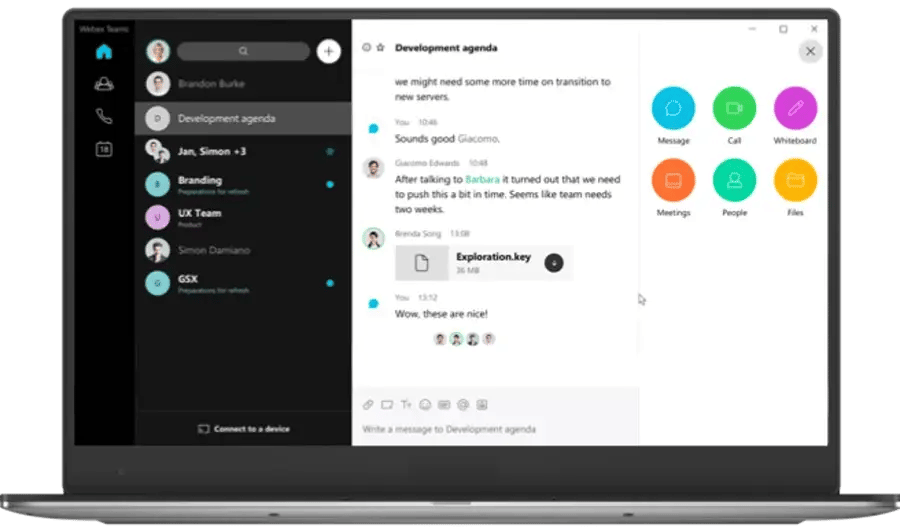
Within each of these collaboration platforms, you could underpin the solution with a version of what we know as Webex Calling today. Customers could choose from on-premises, cloud, or a hybrid mix of both.
Today, however, Webex Calling is the only phone system sold and will soon become the only Cisco phone system supported.
Webex Calling features
Basic calling features available with Webex Calling include:
- A business phone number
- Internal calling (call any Webex user or internal extension)
- External calling (via PSTN breakout)
- Unlimited in-country minutes
- Per minute international calling
- Auto attendant
- Call waiting
- Hold and transfer
- Call forwarding
- Conference calls
- Visual voicemail
- Advanced noise cancellation
You also get the following meeting features included as standard:
- 40-minute interactive meetings
- Whiteboard
- Screen sharing
- Voice optimization
- Secure lobby
- Meeting recording
- Assign co host to meeting
- End to end encryption
- Virtual backgrounds
- Breakout rooms
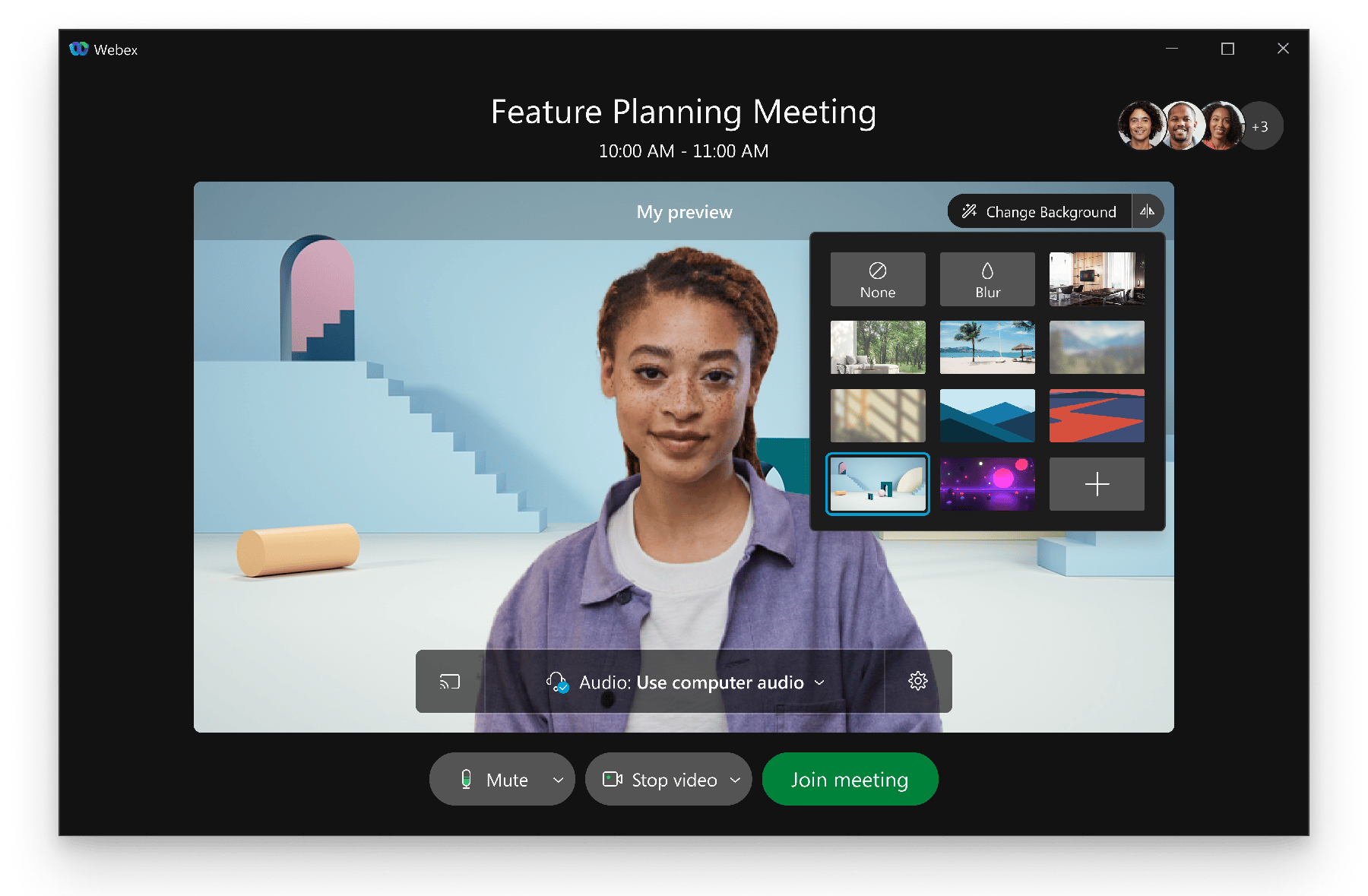
You also get the following collaboration features included as standard:
- One-to-one messaging
- Team messaging
- File sharing
- Presence status
- Send audio clips
- Send asynchronous video messages
As standard, Webex Calling comes with the following security credentials and features:
- End to end encryption
- HIPAA/BAA compliance
- Meeting lock
- Enforce meeting password
- TLS 1.2 (signaling) & AES-256-GCM (media)
For extra features like call center and enterprise security, you need to upgrade to the Enterprise plan. This plan introduces features like:
- Call barging
- Call queuing
- Call recording
- Make and receive business calls using your mobile phone’s native dialer
- FedRAMP authorization
Webex Calling supported devices
What Cisco phones work with Webex Calling?
- Cisco 7800 series
- Cisco 8800 series
- Cisco 9800 series
- All currently supported Cisco wireless handsets
- Cisco 6800 Series
- Cisco DECT 6800 series
- All currently supported Cisco conference phone
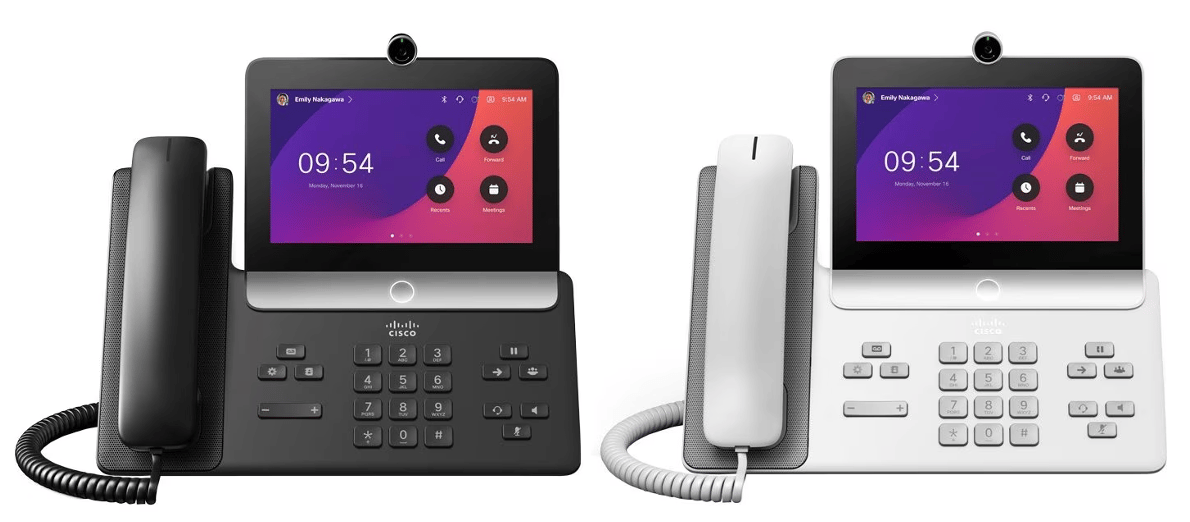
What other phones work with Webex Calling?
You can use Webex Calling with non-Cisco handsets too.
These include:
- Yealink T3, T4, T5 series
- Yealink W52H, W56H, W73H, W59R
- DECT handsets
- Yealink CP920, CP960, CP925, CP965 conference phones
- Poly VVX, CCX, SoundStation series
- Poly 8300, 8500, 8800 conference phones
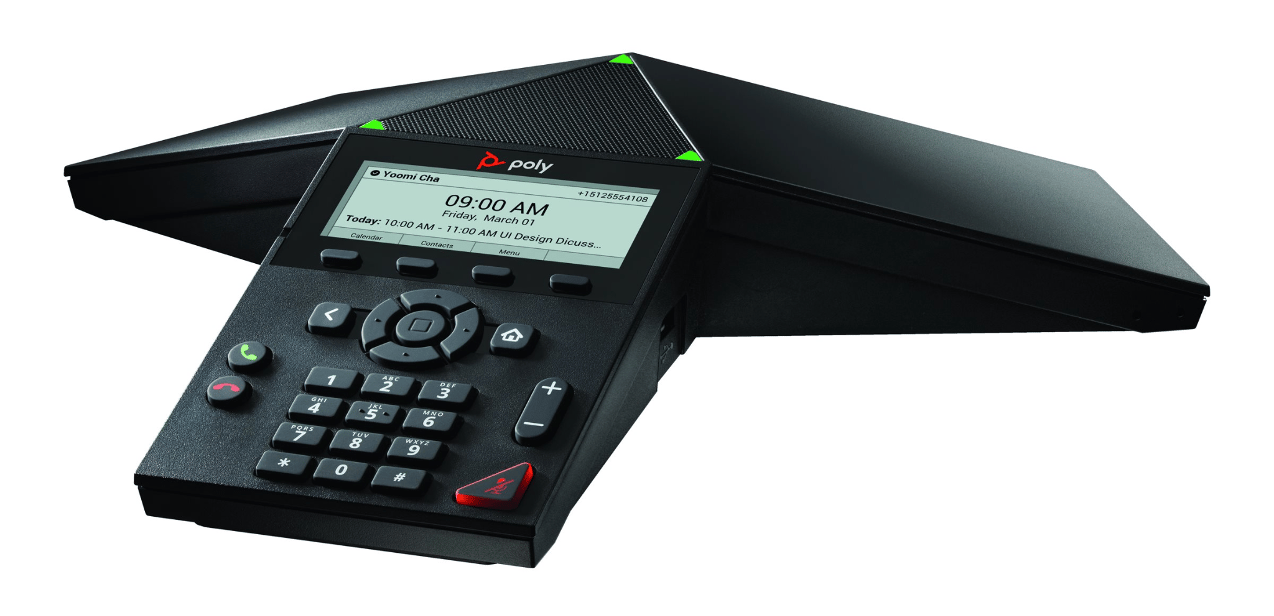
What softphone clients work with Webex Calling?
While it’s possible to use third-party softphones with Webex Calling using SIP credentials, there is no support from Cisco.
As such, it’s recommended to use the Webex softphone client.
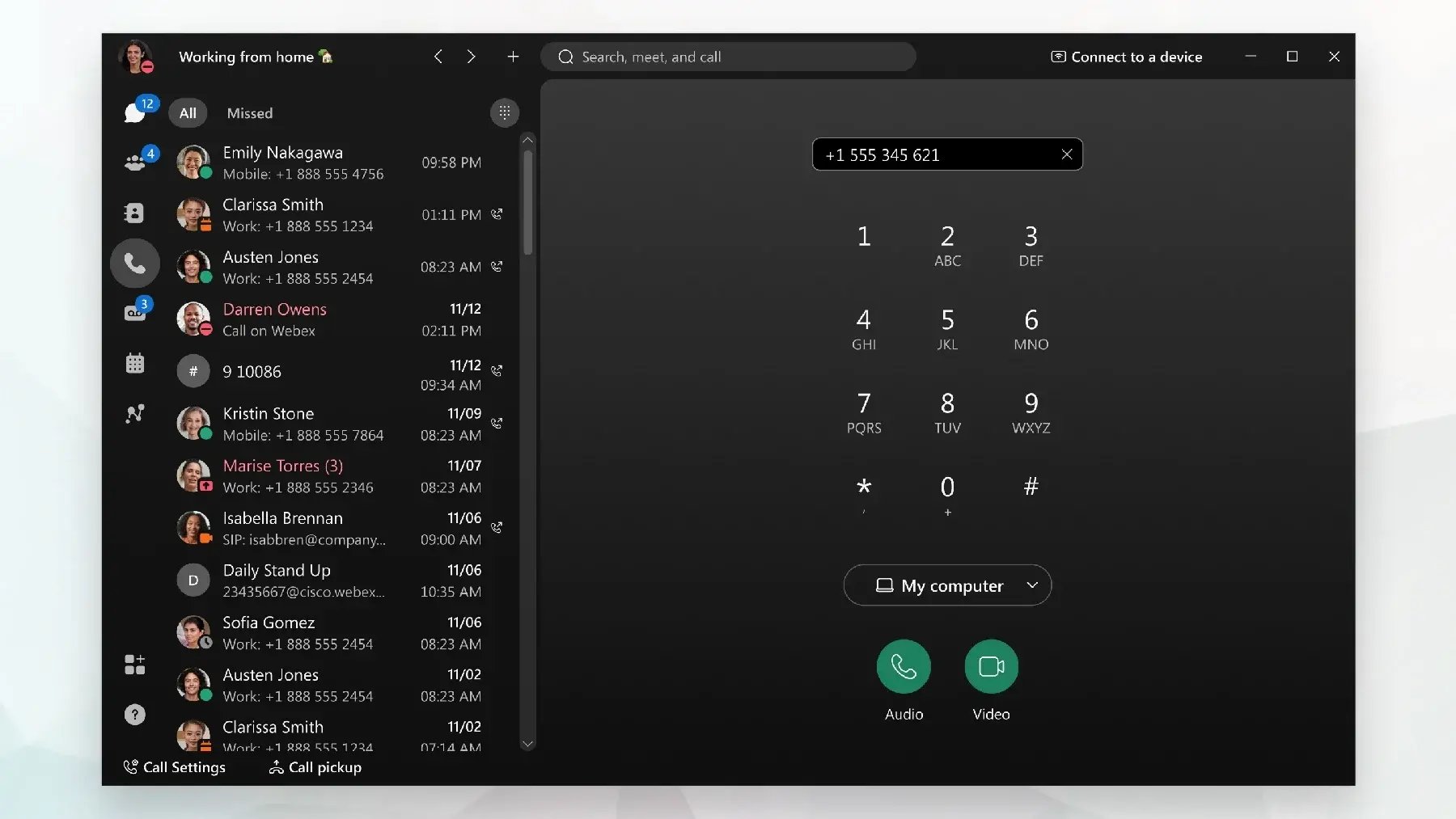
How do I call using Webex?
To make a call using Webex, you have several options:
- Dial the phone number using the dialpad
- Use the contact list to select someone you know
- Return a missed call from the Missed list
- Call a recently called number from the All list
- Search a colleague’s name in the Search bar and hit Enter on your keyboard
How does Webex Calling work?
Webex Calling is a cloud-based service that uses VoIP to send call data over the internet to make and receive calls.
The data sent over the internet is referred to as digital packets. These packets are unassembled during transit then reassembled at the other end and the voice is heard by the receiver.
To make external calls with any cloud-based phone system, users first need to have external connectivity using SIP technology (PSTN breakout).
Webex Calling offers three ways to do this:
- Cisco Calling Plans: Out-of-the-box PSTN connectivity solution for Webex Calling. Allows for easy ordering of new numbers and the porting of existing ones.
- Local Gateway: For those hard-to-reach areas or those with more complex requirements. Allows you to continue to use your SIP trunks in regions with your current carrier or pair Webex Calling with a local gateway device to connect with any provider around the world.
- Cloud Connect: Allows you to ‘bring your own carrier’ to Webex for PSTN calling. Ideal for support in countries where Webex Calling isn’t supported. Uses trusted cross connects/cloud peering between Cisco data centers and external carriers.
Pure IP provides availability in 50 PSTN replacement countries. If you need to deploy Webex Calling, but the region isn’t supported by Cisco, reach out to one of our Cisco team here.
As of 2025, Webex is available in the following countries …
| Region |
Country |
| Africa |
Angola, Cameroon, Côte d'Ivoire, Egypt, Ghana, Kenya, Liberia, Malawi, Mauritius, Mayotte, Morocco, Mozambique, Nigeria, Sierra Leone, Reunion, South Africa, Sudan, South Sudan, Tanzania, Uganda, Zambia, Zimbabwe |
| Asia |
Afghanistan, Armenia, Bahrain, Bangladesh, Bhutan, Cambodia, Hong Kong, India, Indonesia, Iraq, Israel, Japan, Jordan, Kazakhstan, Kyrgyzstan, Kuwait, Laos, Lebanon, Malaysia, Mongolia, Myanmar (Burma), Nepal, Oman, Pakistan, Philippines, Qatar, Saudi Arabia, Singapore, South Korea, Taiwan, Tajikistan, Thailand, Timor-Leste, Turkmenistan, United Arab Emirates, Uzbekistan, Vietnam |
| Australia |
Australia, Fiji, New Zealand, Papua New Guinea, Solomon Islands, Vanuatu |
| Central America |
Costa Rica, El Salvador, Guatemala, Honduras, Nicaragua, Panamá |
| Europe |
Albania, Austria, Belgium, Bulgaria, Croatia, Cyprus, Czech Republic, Denmark, Estonia, Finland, France, Georgia, Germany, Greece, Hungary, Iceland, Ireland, Italy, kosovo, Latvia, Lithuania, Liechtenstein, Luxembourg, Malta, Moldova, Monaco, Netherlands, Norway, Poland, Portugal, Romania, Slovenia, Slovakia, Spain, Sweden, Switzerland, Turkey, Ukraine, United Kingdom |
| North America |
American Samoa, Anguilla, Antigua and Barbuda, Bahamas, Barbados, Bermuda, British Virgin Islands, Canada, Cayman Islands, Dominica, Dominican Republic, Grenada, Guadeloupe, Guam, Jamaica, Martinique, Mexico, Montserrat, Northern Mariana Islands, Puerto Rico, Saint Kitts & Nevis, Saint Lucia, Saint-Pierre and Miquelon, Saint Vincent & the Grenadines, Sint Maarten, Trinidad and Tobago, Turks and Caicos Islands, United States, US Virgin Islands |
| South America |
Argentina, Aruba, Bolivia, Brazil, Chile, Colombia, Curacao, Ecuador, French Guiana, Guyana, Haiti, Paraguay, Peru, Uruguay |
A regularly updated table can be found here.
Cloud Connect also comes with the benefit of the cost savings. While Webex Calling directly through Cisco may come with unlimited domestic minutes, there’s only so much bundling and discount that can be offered internationally.
Benefits of Webex Calling?
| Benefit |
Description |
| Expandable to almost any country with Pure IP Cloud Connect |
Ensure coverage of all locations through a combination of Webex Calling and a trusted partner with extensive geographic reach |
| 99.99% SLA |
Gives you peace of mind that your service is available and can be further backed by Webex Site Survivability |
| Administered in the Webex Control Hub |
Manage all aspects of your Webex estate; now with generative AI for help with troubleshooting |
| All-in-one platform |
Users have a single interface for calling, messaging, and meetings |
| Consistently recognized as Gartner Magic Quadrant Leader for UCaaS |
Peer and industry recognition reinforces strength of solution |
| One of the most secure cloud PBX systems on the market |
Assessed and analyzed by multiple third parties |
| Highly integrative |
Plug in line of business app and even competitor products like Microsoft Teams |
| Thousands of positive reviews |
G2, Capterra, and Gartner Peer Insights all rate over 4 out of 5 |
Our in-house communication has become more efficient due to Webex Calling’s user-friendly interface. From any device, placing and taking calls seems natural and the process of integrating it with our current workflow is easy. It promotes a centralized hub for communication due to its smooth integration with other Webex features like meetings and messaging.
Adam S., Human Resource Manager at a mid-market education management company
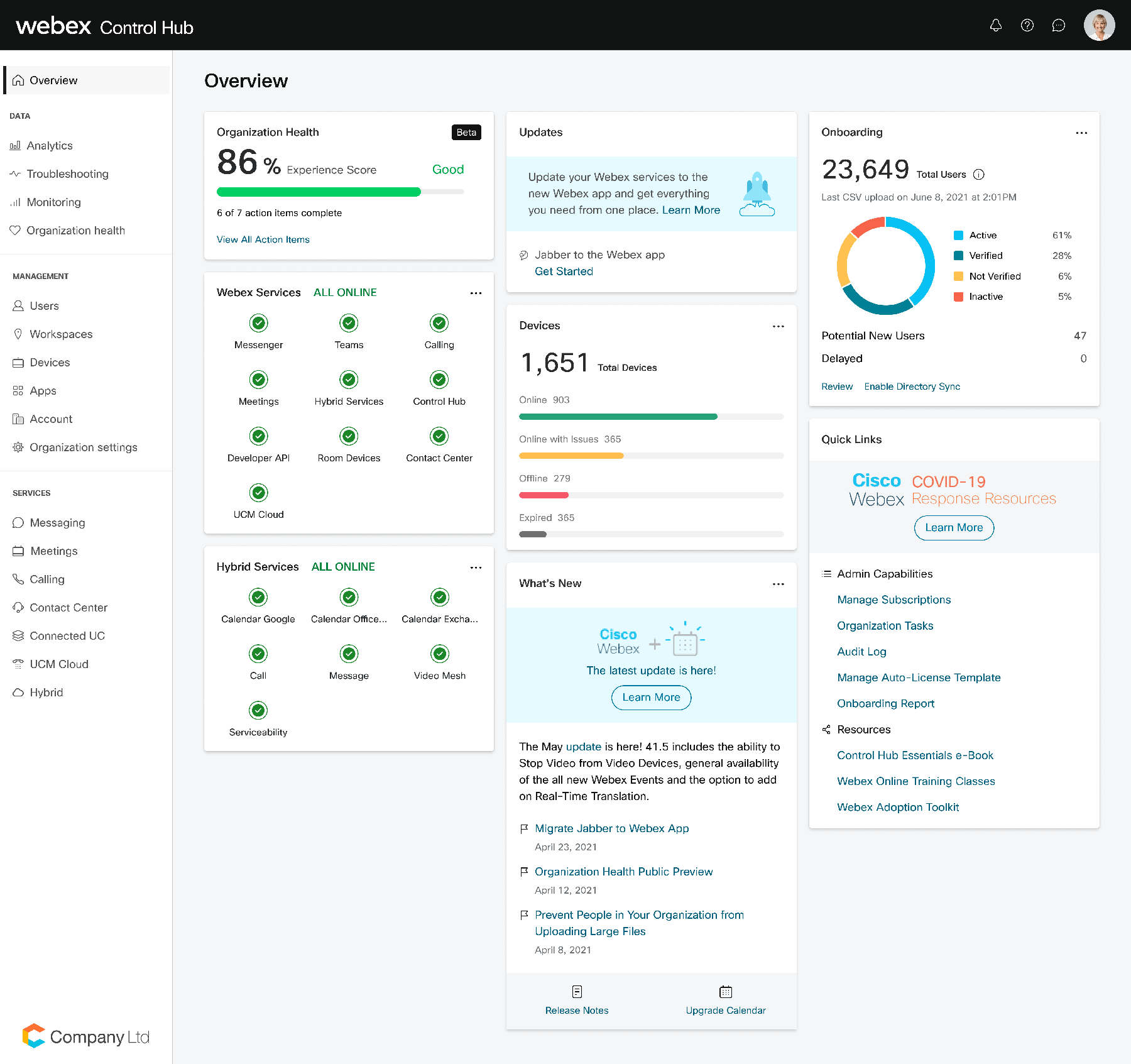
Webex Calling Pricing
There are three tiers to subscribe to Webex Calling; all of which as SaaS models.
- The Webex Call package grants access to all the basic features and starts at $17 per user per month.
- Webex Suite unlocks meetings without a time limit (instead of capped at 40 minutes), 200-person capacity meetings (instead of 100), and includes tons of advanced meeting features. This package starts at $25 per user per month and represents great value for users who hold lots of virtual meetings.
- Webex Enterprise is the top tier to subscribe to Webex Calling. You get everything in Webex Suite and Webex Call as well as 1,000-person capacity meetings, unlimited cloud recording, FedRAMP security, call center and streaming features. You must contact the Webex sales team for a custom enterprise quote.
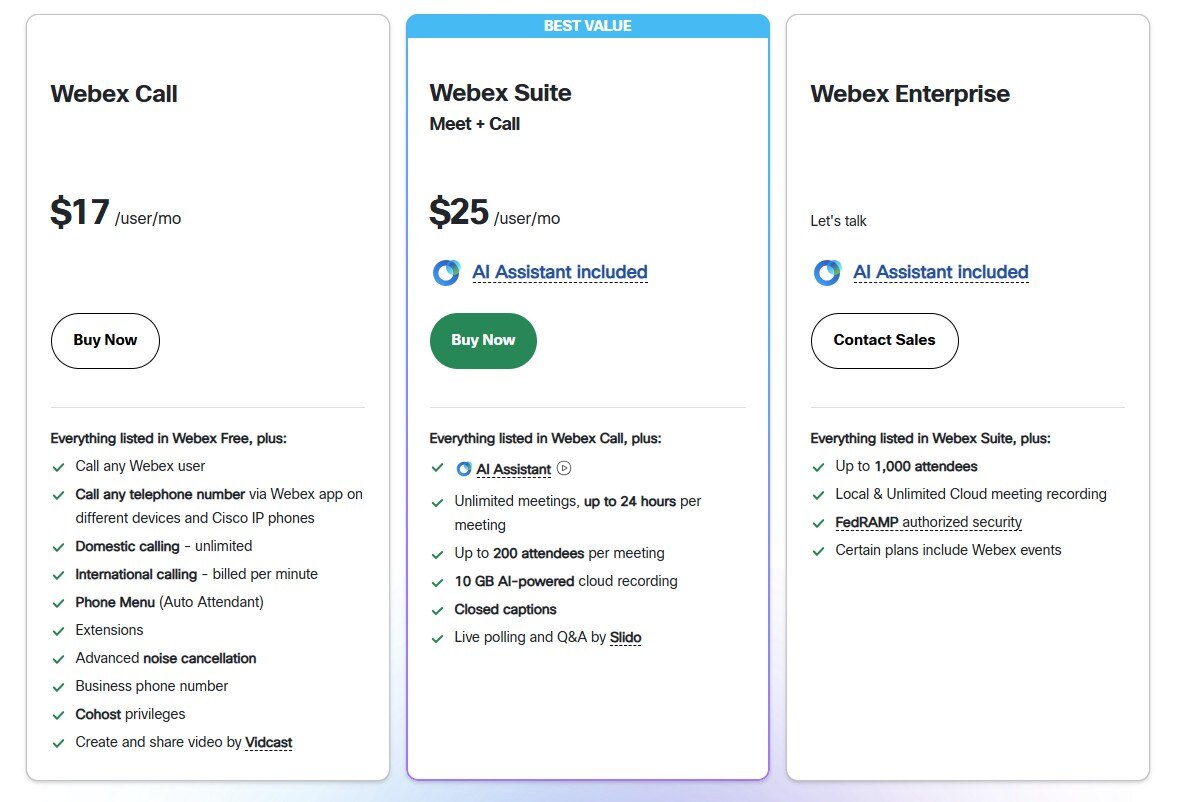
Is Webex Calling free?
You can get a free trial of Webex Calling for 90 days.
Included in a Webex Calling trial is:
- All the Webex Call features
- A loan of Cisco IP phones (if you need them)
There is no free tier for Webex Calling on an ongoing basis. However, you can sign up for the Webex Free plan if you only wish to host virtual meetings.
The following features are included in a free Webex plan:
- Meeting length up to 40 min
- Up to 100 attendees
- Unlimited one-to-one and team messaging
- Unlimited whiteboard
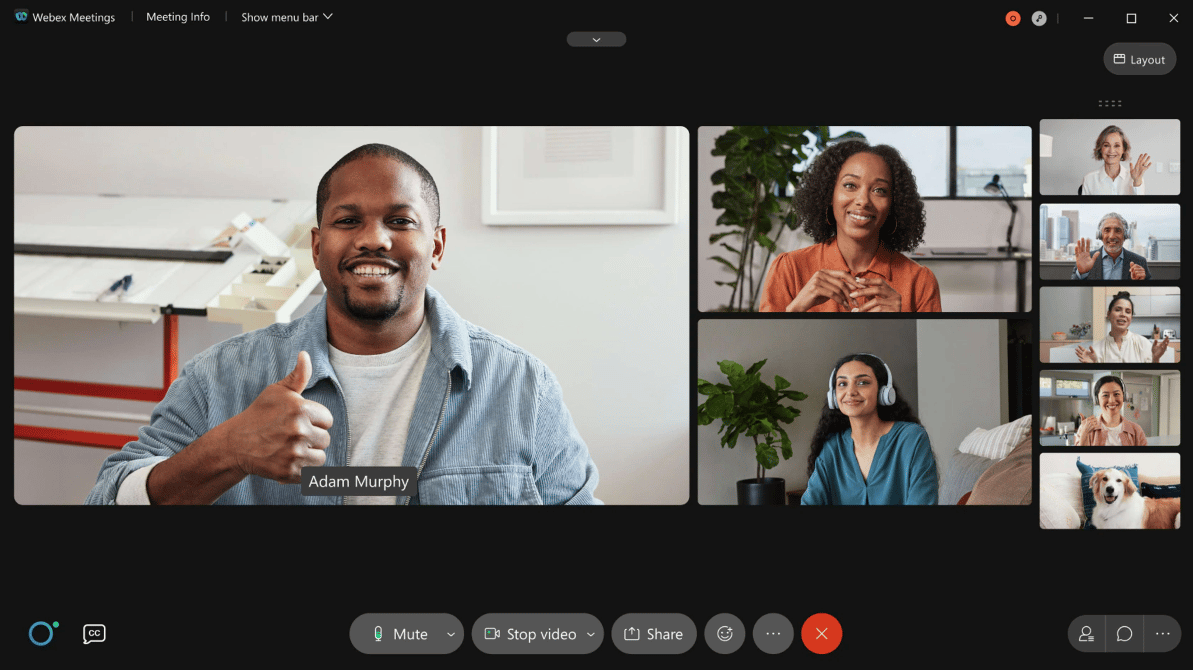
Pros and cons of Webex Calling
| Pros |
Cons |
| Longstanding telecoms legacy |
Requires third party for global coverage |
| Large ecosystem of partners and integrations |
Multiple interface refreshes in recent years |
| Extensive professional services function |
Number of layoffs in recent years |
| Highly integrative with other Cisco products |
Some users report clunky app experience |
| Highly integrative with competing solutions |
Cost is prohibitive for small businesses |
What’s the best thing about Webex?
It could be argued that Webex is the most secure cloud calling solution on the market.
From its highly secure data centers housing the cloud environments to its multilayer security model, there’s a lot that gets security experts excited about Webex.
Data center security initiatives include:
- 24-hour on-site security
- Nondescript unmarked facilities with natural boundary protection
- Silent alarm system with automatic notification to local law enforcement
- Fully redundant HVAC facilities
- Automatic fire suppression systems
- N+1 redundant uninterruptible power source with redundant backup generators
- Location specific disaster recovery plan
- Biometric scanning and two-factor authentication for access
- All ingress and egress through vestibules (man-traps)
- Access requires a valid government-issued photo ID
- Authorization needed prior to access
- Shipping and receiving are walled off from co-location areas
- All material inspected upon arrival by security staff
Webex Calling is certified to the following standards:
- ISO 27001: 2013
- ISO/IEC 27017: 2015
- ISO/IEC 27018: 2019
- SOC 2 Type II for applicable trust services criteria for security, availability, confidentiality
- SOC 2 Type II Privacy
- SOC 3
Webex Calling runs a multilayer security model. This means you get unmatched visibility and threat detection backed by a resilient foundation using Cisco’s award-winning infrastructure.
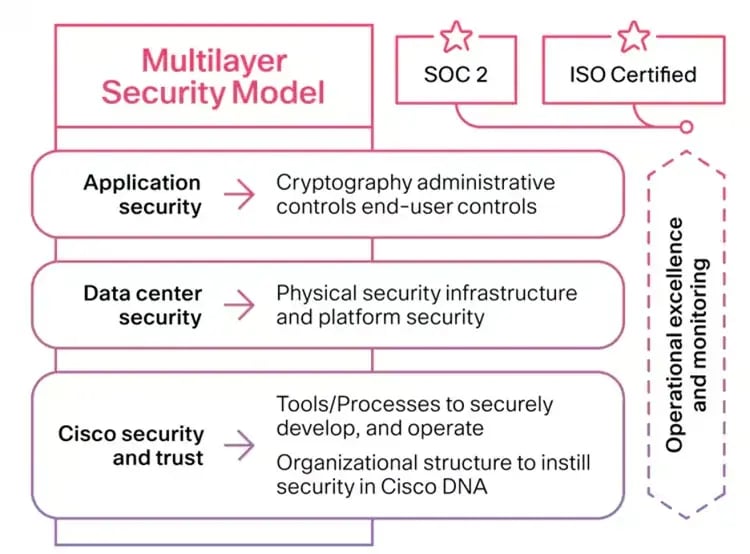
As standard, you get carrier-grade availability. This is ensured by:
- N+1 server clustering
- Automatic data replication within and between data centers
- Distributed denial-of-service (DDoS) detection and prevention
- Geographic redundancy (10 data centers across three continents)

What are the negatives of Webex?
Webex has gone through a lot of interface refreshes over the last decade. From a user standpoint, this can be a little annoying as you must get used to changes in feature placement.
For example, if you’ve memorized how to make a call without even looking at the screen, you might have to learn a new habit. Likewise, if it’s taken a long time to learn a specific workflow, you must now start that process again.
That said, the current Webex app is the most intuitive to date. A lot of work has gone into the modernization of the Webex app for calling, messaging, and meetings. Many users and industry commentators now feel it’s more able to compete with the likes of Slack and Zoom when it comes to usability. This feat was unheard of only a few years ago.

Is it easy to migrate Webex Calling?
Yes. If you have the right help along the way.
Here’s how you can migrate to the Calling Plan and Cloud Connect models.
How to migrate to Cisco Calling Plans
If you are using Cisco Calling Plans, the first step is to set up your Webex Calling account and configure your calling settings.
This process can be done through the Webex Calling portal, which provides a user-friendly interface to manage your calling features.
To do this, head to settings.webex.com and log in using your Webex credentials. Walk through the guided step to create your new account.
Account setup is crucial as this will be the area you store user details and phone numbers.
After you’ve set up your account, you need to migrate your existing phone numbers to Webex Calling.
The next step is to transfer your number to Webex Calling. This process can take a few days to complete, depending on your service provider's policies and the complexity of your phone system. If you’re moving Cisco to Cisco, the process is often quicker.
Head to the Port or transfer existing number section and enter the numbers you wish to port.
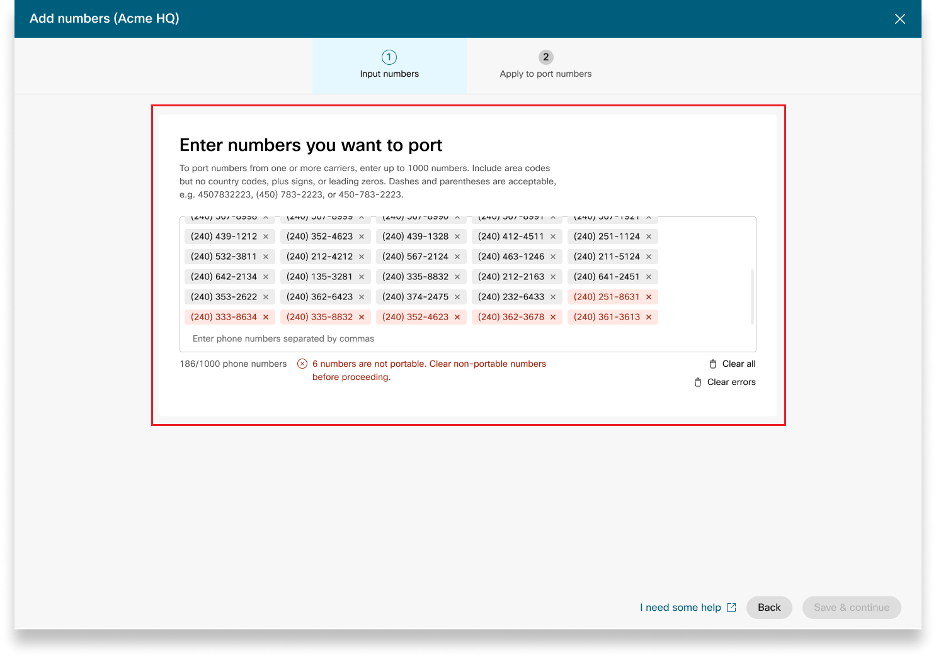
Follow the steps in the workflow to complete your porting request. Updates will appear in the portal and via email if you have notifications enabled.
Note: when porting numbers from a third party (i.e. not Cisco), you will need to sign and upload a letter of authority and recent bill before you can start porting.
Important: make sure you check for the porting date so your numbers don’t move without you knowing.
Once ported, your numbers will appear in the Webex Control Hub under the Calling section. Here, you can manage numbers, users, routing, and apply specific features as you need.
How to migrate to Cloud Connect
To use Cloud Connect, you need to get number and connectivity services from a Cisco Certified Calling Provider.
At this stage, it’s recommended to have an understanding of phone numbers needed, existing ones that need to be ported, and your usage.
Need help preparing your numbers before porting?
Get an understanding of your telephony environment to fast track your migration to the cloud.
The actual provisioning and porting of numbers is done via the Webex Control Hub. From here, you can connect to your chosen provider and add details of required numbers.
Once ported, you can make any number or user changes here too.
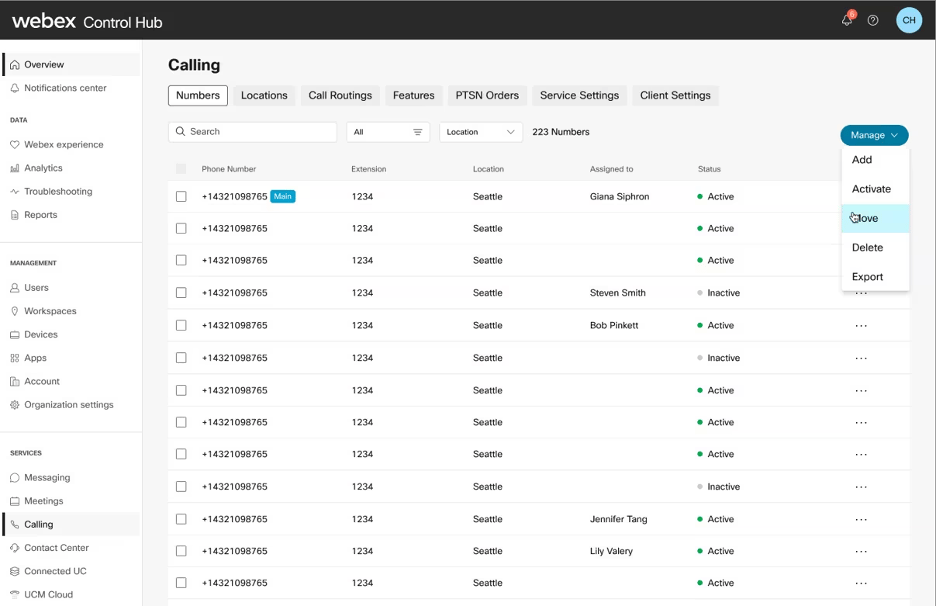
Extending Webex Calling to Mobile with Webex Go
For businesses that rely on mobile communications, Webex Go extends Webex Calling directly to mobile phones, providing a seamless, compliant, and secure calling experience. By leveraging eSIM technology, users can make and receive calls using their business number through their phone’s native dialer—without needing a separate app.
This ensures all calls remain part of the corporate phone system, enabling features like call recording, internal extension dialing, and centralized management via the Webex Control Hub. Employees benefit from improved call quality by utilizing mobile networks instead of relying solely on Wi-Fi or data connections, reducing latency and dropped calls.
With Webex Go, businesses can maintain control and visibility over mobile calls, ensuring compliance and security while providing employees with the flexibility to work from anywhere. The eSIM activation process is straightforward, allowing organizations to quickly deploy Webex Go without additional hardware or complex configurations.
How Pure IP can help you with
Webex Calling
You can connect Pure IP’s secure and resilient cloud-based global voice network with Webex Calling for a high-quality and reliable voice service.
Not only can you reach the locations Cisco doesn’t serve, but you can also save a considerable amount on international costs.
The solution uses direct links between our voice network and Webex Calling. To achieve end-to-end compatibility with the Webex network, we deliver a managed voice solution with 24/7 technical support and a suite of online management tools.
Specifically aimed at enterprises, Pure IP supports a wide range of deployments including basic calling scenarios, enterprise-scale dedicated instance migrations, and demanding high-volume Webex Contact Center deployments.
Pure IP also offers managed SBC services for extended geographic coverage and SIP Connect services to integrate with legacy and analog devices.
Whatever your need is, if Webex Calling is in the mix, we’re sure we can help.














